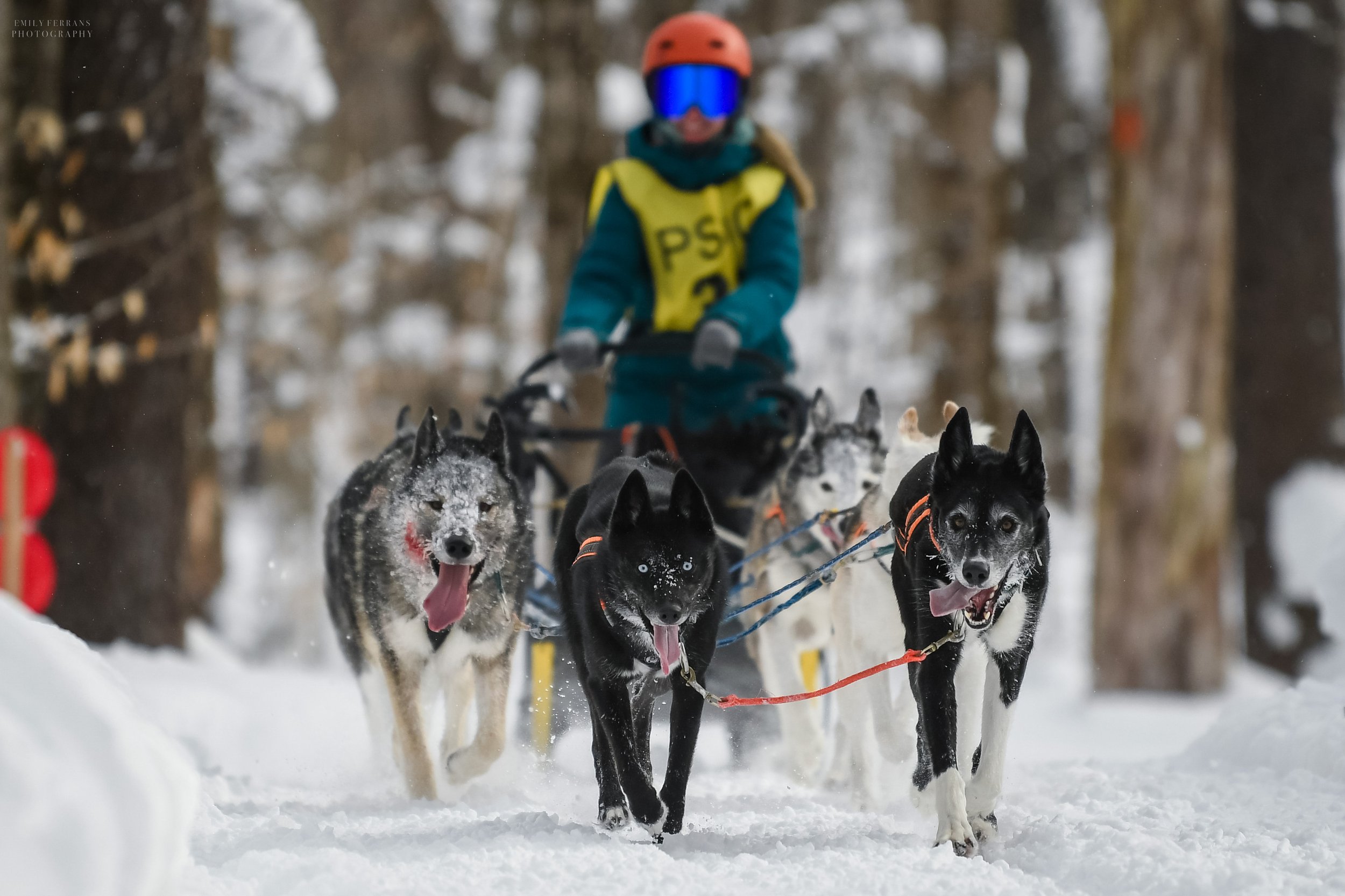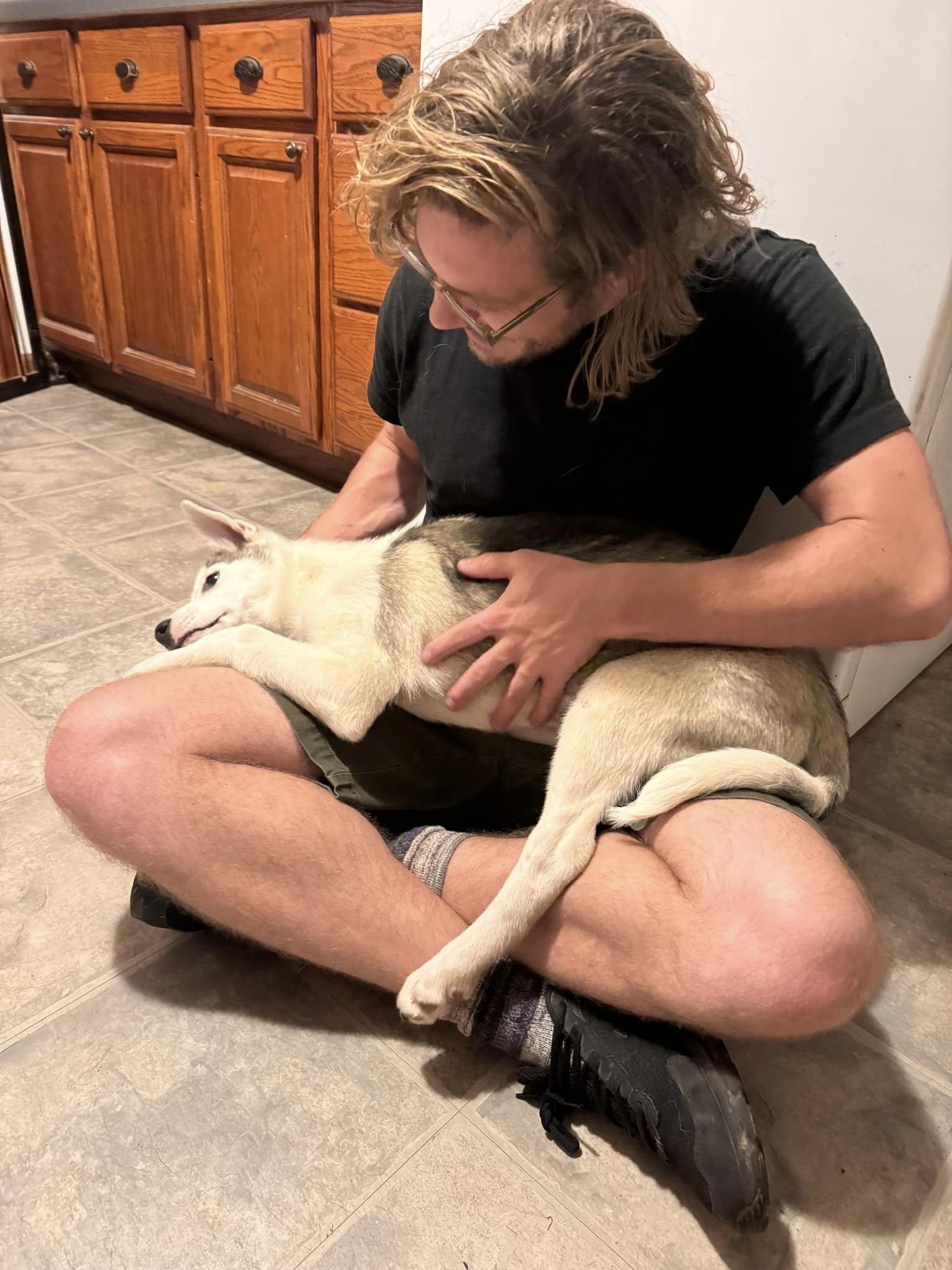The mushing season is winding down after what felt like an endless winter. Heck, it remains colder than usual and we even got 6” of snow this week. Nevertheless, we’ve transitioned to short ATV runs as the days get warmer and longer.
Kuiper and Laika rejoined the race team dogs, since we’re not going very fast or far. They both look great! I’m hopeful they’ll be part of the race team pool next season. Willow’s foot injury hasn’t been bothering her, but I can tell the tendon is still swollen, so she’s going to be benched until fall. She’ll be 10-years-old at that point, so we’ll see how much she wants to do with the big team, or if she’ll stick to B Team runs.
This season had plenty of challenges, which I’ve already written about. That’s not what this post is about. Instead, this is to share the good that came out of the 2024-2025 season, because there was a lot of it!
Sheridan moved in! This was the first season with Sheridan living here and his contributions to the team must be celebrated. He did all the usual handler duties: he traveled with us to events, drove long hours, helped wrangle dogs, and got us to the start chute. He stood in the rain and slept in the cramped, cold van. He lined-out the team for training runs at home. He was out on the snowmobile, breaking trail for us after almost every snowstorm. And most of all, he loved us unconditionally, even when it meant sharing the bed with 4-6 dogs.
Eating on the road! The dogs notoriously suck at eating when we travel. This isn’t great when you’re competing in races. This season, I began giving the dogs their meals and meat soup in their crates inside the van. Like magic, they’ve eaten much more reliably. This was kind of a “duh” moment, since they eat in their crates at home.
We raced! Though the season sort of fizzled out for us, we did manage to attend a brand new race (the Osceola Dryland Challenge) as well as a new-to-me race (the North East Dryland Challenge). We also saw the return of the Tug Hill Challenge—the race that brought me to central NY.
Kuiper joined the team! Though his future is still a bit uncertain (pending cardiology appt. this summer), Kuiper has been running with the team and fit in pretty seamlessly. We’re keeping things pretty short for him right now, but he did run in his first races this past fall.
Gear upgrades! I picked up a used Sled Dog Systems K2 sprint sled, which is great for running smaller teams (and maybe, when I have the steering down, big teams, too). It also folds, making it much easier to pack. We traded my gigantic Polaris snowmobile for a much more manageable Ski-doo. It weighs a lot less, which makes it easier to un-stuck, but it’s still big enough to handle deep snow. Lastly, I bought my first real sprint rig for dryland racing—a zippy little K9 Cruiser from Wolftrack Dog Carts. I have yet to use it, but it should make its debut this fall!
I’m not too sure what next season will have in store for the team. As I mentioned, Willow will be 10. Blitz is turning nine and Hubble is turning eight this summer, so they’re not too far behind her. The boys don’t seem to be slowing down just yet, but I’ll be keeping an eye on them. Laika (who will be six, turning seven in January) appears to be happy rejoining the team, but I’ll only race her at the more low-key events without many spectators. Sagan and Hopper will be six next season, Atlas will be five, and Faye will be three. They are my core race team, and all four can lead. I am really hoping Kuiper gets the all-clear from the cardiologist this summer and he can join the race team, but we’ll have to wait and see.
As far as our goals are concerned, I’d like to run the dogs in Michigan next season. That’s one big mushing hub I have yet to visit, though I’m not sure what events we’ll be shooting for. For now, our only goals are to get out until it’s too warm to do so, and then enjoy our summer break.








































